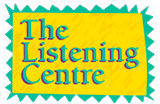Tuning the Ear at The Listening Centre (based on Madaule, P. [1998] “Tuning the ear of those who can’t learn”)
Paul has seen many different children over his 39 years of practice. Many are suffering badly at school. Some are barely making it through the grades, others are flunking year after year, and many of them have been placed in special education programs. Many have gone through assessments and endured many hours a week of therapy and extra help. Some are on Ritalin. They may have been diagnosed as having autism spectrum disorder (ASD), as being learning disabled, as having auditory processing problems, as dyslexic, or as having ADHD (attention deficit disorder).
A listening difficulty is likely at the root of their learning problem. This has nothing to do with their actual hearing. The ear is fine, its ability to focus - or to tune in to sounds - is not. The listening difficulty affects attention span, their memory, and ability to read, spell and write properly. It also accounts for a tendency to misinterpret messages and difficulty in collecting and organizing thoughts. Information received with gaps and distortions is recorded and stored away this way. What remains at the end are bits and pieces that have little in common with the original information.
Listening is also strongly related to level of energy and motivation. One of the main functions of the ear is to transmit to the brain the energy received from sounds. The ear acts as a dynamo which feeds the nervous system to maximize its efficiency. Tiredness, headaches at the end of the school day, feelings of boredom and laziness, frustration, moodiness, and oversensitivity at school, at home or with friends may also be related to faulty listening.
In addition, the ear is involved in the control of our body movements and its positioning in space and it affects physical coordination. Even the movements of the eyes when reading are affected by the ear. Although it may sound counterintuitive, children with problems with sports, motor functions and coordination may also suffer from faulty listening.
Paul explains that “the engine is fine; it just needs a tune up”. The Listening Centre provides this “tune up” through individual tailored programs of sound stimulation (music and voice) that are received via headphones and bone vibrators after modification through filtering. Most programs consist of two intensive phases of about 30 hours each (2 hours/day for 15 days) with about a one-month break in between. The program consists of two parts: a “passive phase” to develop receptive listening skills during which children play, draw or paint and most adults rest and relax; and an “active phase” where voice exercises (humming, singing, or reading into a microphone) are introduced. A play room has also been specially designed to enable small children to move around while listening and to facilitate sensory and body integration. Upon completion of a program, progress is monitored for at least one year. Exercises and short listening training “boosts” may be recommended.
 Skip Navigation
Skip Navigation